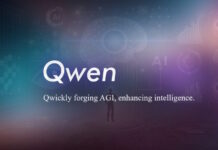Vipin Sahu, CEO of Webkul and founder of the e-commerce platform Bagisto, talks about the latter’s growth story in an exclusive interaction with Sreejani Bhattacharya of OSFY. Bagisto was founded by Vipin Sahu along with Jitendra Singh, Nitish Kumar and Saurav Pathak.He also discusses at length the problems the open source community faces in India.
Here are some interesting excerpts from the interview:
OSFY: What does Bagisto do and what is the target audience it caters to?
VS: Bagisto is an open source e-commerce platform built on Laravel. However, it is not limited just to e-commerce and also offers post- commerce solutions. The user canbuild marketplaces, point-of-sale (PoS) solutions, progressive Web apps (PWA), and dropship solutions using Bagisto.
The platform is highly scalable, flexible and can be customised by developers working on the Laravel framework. Any small, medium or enterprise merchant can easily use Bagisto to build its e-commerce platform. Developers and freelancers can use Bagisto to build their own customised e-commerce solution and deliver it to their client in a short span of time.
OSFY: How did the idea to launch an open source e-commerce platform come about?
VS: Open source e-commerce already has many big players like Magento, WooCommerce, OpenCart, and so on. Webkul has been working since the past 10 years on almost all major e-commerce platforms, and we found that there is a huge gap between demand and supply when it comes to platform-driven e-commerce solutions. If someone has worked on a model view controller (MVC) architecture framework like Symfony or Laravel,they will know it is very hard to develop an e-commerce solution for these. They either need to write code from scratch, or learn a new platform completely and adapt to that. If somebody needs to work on Magento, they need to learn Magento first.
The very idea that anyone working on any MVC framework architecture can develop their e-commerce system led us to work on Bagisto. So, if someone has worked on a popular MVC architecture platform such as Laravel, they can easily use Bagisto and develop a custom solution.
Also, most frameworks today do not make use of recent technologies. But the world is moving towards headless architecture and progressive Web apps(PWAs). In a country like India, there are still places where the Internet does not function properly. PWAs can have a big impact as they offer offline functionality to both small and medium merchants. We believe these technologies should be at the core of e-commerce.
OSFY: What is the business model of the company? How does it generate revenue?
VS: We work on a wide range of platforms — 22 platforms to be exact, which includes Salesforce, Odoo, WooCommerce, Magento, etc. We work on developing tools and plugins for e-commerce frameworks, and customising ERP and CMS solutions. The sale of these plugins and customisation are our sources of revenue generation.
OSFY: How do you get funding to run the business? What kind of funding have you received so far?
VS: We are a totally bootstrap company. We are being funded by what we earn, and have been growing constantly and in a profitable manner. In just one year, we have got more than 1700 GitHub Stars, over 40 contributors on GitHub, over 10,000 downloads, and a growing community of over 1000 members.
OSFY: What were the challenges you faced while building this platform? How did you overcome them?
VS: The biggest challenge we faced was building a community and convincing people to use our platform. The open source community matters a lot to us, as until and unless new users adapt to our platform, we cannot grow as a framework.
At the start, none of the merchants were taking us seriously. It’s a mindset that questions how can an open source platform that comes from India scale. And then people complain that the country has not produced a Google, Microsoft or any great open source platform like Magento. The reason is that even though we have the skillsets no one is giving big projects a try, and that’s why no great open source projects are coming from India.
We, too, made a lot of mistakes when we first built our open source project. But we kept trying to update the code and released new versions, and then the development community slowly started contributing to our platform. For every query that we got, we tried to provide dedicated support, irrespective of whether the developer was a noob or experienced in his or her work. Live support on the platform is something we made the most use of and the feedback really helped us.
OSFY: What are the future plans for Bagisto?
VS: Adopting technologies like microservices architecture, GraphQL integration and making Bagisto a business application platform is what we have on our roadmap. In the future, if users want to build a CRM, ERP or CMS application, they should be able to use Bagisto components to build one of their own.
We also have plans to appoint open-ambassadors in various countries like Colombia, the Netherlands, Israel, China, and the United States who will take care of the Bagisto e-commerce ecosystem in these countries. Work has already begun on this front.
OSFY: According to you, how is open source faring in India? What can be done to improve it?
VS: In India, people mostly have a job-oriented mindset rather than a community-oriented one. This is the reason why we have so few contributors from India in open source projects. We either have merchants or developers, and no one wants to use a product until they get a proper validation about it. When we first released Bagisto, it was compared with other frameworks, and we were even asked if we were going to compete aggressively with existing frameworks like Magento or WooCommerce. All that we are doing is trying to address the issues that come up and improve constantly.
Even when you go to a startup challenge or hackathon, you will find a lot of investors funding a paid business model. Most of them are writing a blog and making weekly videos on which project they have invested in. But you will never find investors for open source projects in India. Things are different outside India. Investors are not only investing in open source projects like Magento and Akeneo, to name a few, but companies like Adobe are acquiring these too. This certainly needs to change in India.
We need to promote open source projects like how the Chinese, Europeans and Americans do. We need to provide a global stage to showcase open source projects. Things are certainly not going to happen overnight, though. It will need time, but we need to make a beginning.
OSFY: How is the Indian open source space different from, say, in the US or Europe?
VS: There’s a big, big difference and a huge gap between the open source space in India, and in the US and Europe. In fact, the ratio is around 100:1 when it comes to open source projects from the respective ecosystems. There is no investor for open source projects in India, and there are no opportunities being provided to promote them.
At the end of the day, any open source company originating from India ends up being a service provider. There is no support from investors and, most importantly, the mindset of people. Everyone is comfortable working in big companies, but no one wants to jeopardise their career by working on open source projects.
People in India are working on open source projects, but these have not originated in India. Our attempt is to change this scenario. We do not know whether we will succeed, but we are constantly trying our best to work on open source projects. In the end, India should be the place of origin for global open source projects.
















































































